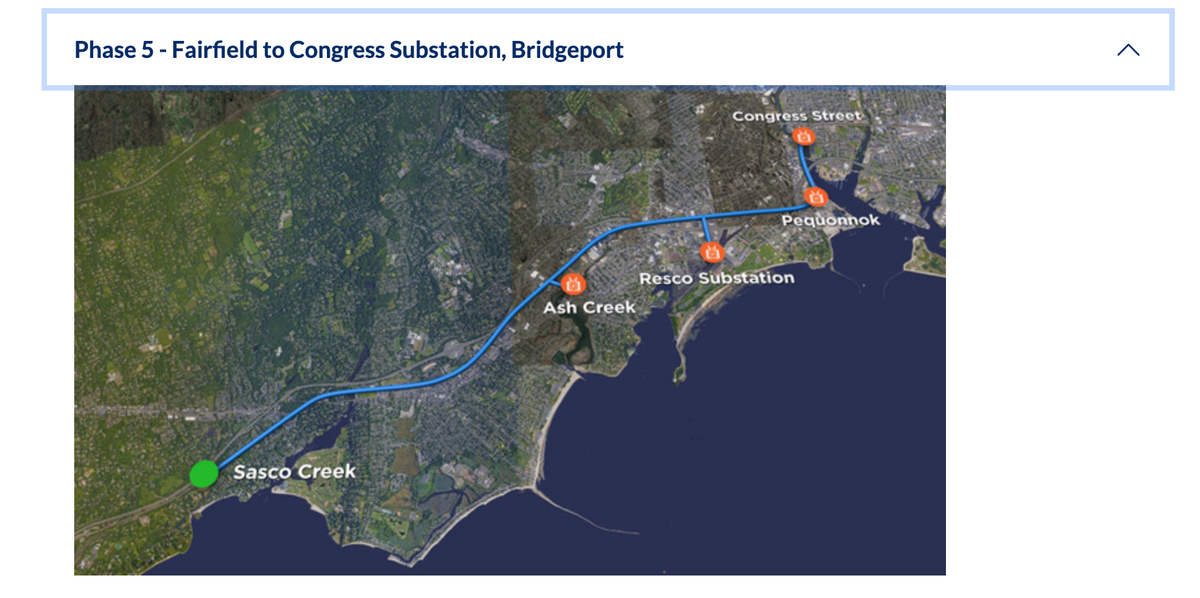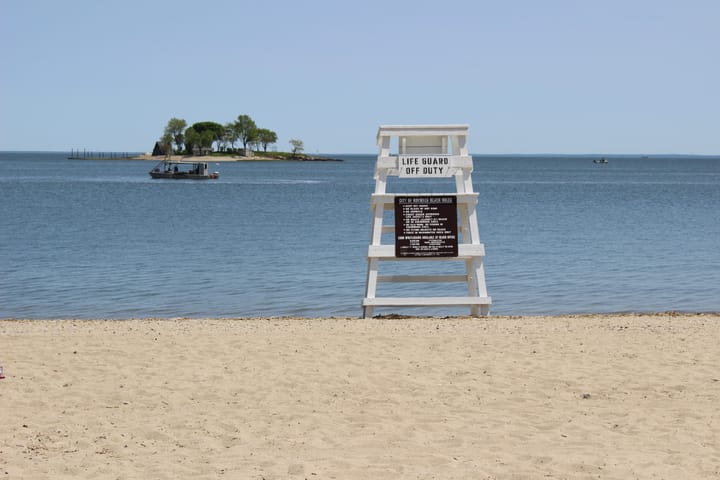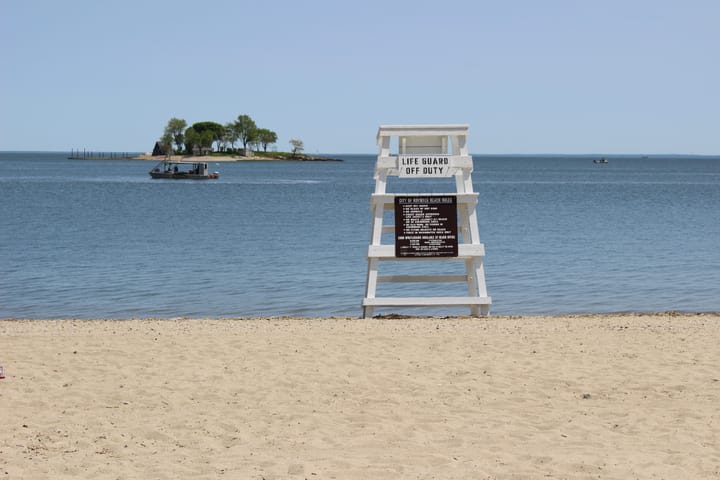‘A Detrimental Impact’: Why the Fairfield Community Is Opposing United Illuminating’s Power Line Replacement Plans
UI’s application to move forward with these plans is currently in front of the Connecticut Siting Council. There's a continuation of its evidentiary hearing on Tuesday, November 28 at 2 p.m.

A debate over how power lines get replaced has taken over Fairfield and the impacts of it could soon be felt by the entire region.
United Illuminating (UI), a regional electric company, has been relocating and rebuilding many of its electric transmission lines along the Metro North rail line starting in New Haven and ending in Fairfield. So far, the company has completed pieces of its project in Milford, Stratford, West Haven, and Bridgeport.
The proposed plans call for taking the existing transmissions lines off of the railroad infrastructure and building about 100 steel monopoles, located near the tracks that would carry the transmission lines. However, in order to build those monopoles, which stretch about seven miles, the company will need to conduct construction activities on about 19 acres of private properties—one of the many concerns officials and residents have.
“The proposed project will have a detrimental impact to abutting and neighboring properties as well as to the Town as a whole,” outgoing First Selectwoman Brenda Kupchick said in her testimony against the application. “The lack of preparedness and evasive answers from UI has caused the Town and its residents to feel that their legitimate concerns have not been heard and properly considered.”
Kupchick added that the “preservation of the historic and communal nature of our community is of utmost importance to me, my administration and the public at large and while the alternatives of placing the project underground or rebuilding it in its existing location may cost more (as per UI), the permanent damage to our town under UI’s preferred alternative cannot be measured in dollars and cents.”
UI’s application to move forward with these plans is currently in front of the Connecticut Siting Council, which has jurisdiction over power facilities and transmission lines, as well as hazardous waste and other forms of infrastructure, such as telecommunications sites. The Council continued its evidentiary hearing, which includes the presentation of exhibits and witnesses, on the application to Tuesday, November 28 at 2 p.m.
Let’s take a look at the plans and why local, state, and federal officials have said that the plans would severely impact the town.
Replacing the Transmission Lines
Right now, UI’s power infrastructure sits on top of the railroad’s infrastructure, including the infrastructure used to carry wires and electricity over the tracks. These were built in the 1910s, while UI’s lines and power infrastructures were added over the years between the 1940s and early 1990s, which is why officials said they need to be replaced. The company said that a comprehensive assessment found that the existing structures have “age deterioration and reliability issues,” particularly with increased power demands from the region.
The assessment also found that the “failure of the existing transmission line support structures may result in catastrophic failure of [the] circuits, loss of power to one or more of the five substations in this segment, and threaten safe operation of the Northeast Railroad Corridor.”
The goal of rebuilding and replacing the power line infrastructure is to “increase the reliability and resiliency of the energy grid,” according to UI.
“It’s hardening our system to make sure it meets certain conditions,” said Shawn Crosbie, the project unit manager for the rebuild program at an October 4 public town meeting. “It has benefit to the people of Fairfield in terms of hardening the system to make sure when we have a catastrophic or the potential for a catastrophic event that we are still providing electricity to our customers.”
The company developed a range of options for how to rebuild and replace these lines. Its preferred plan, and the one it presented to the state’s Siting Council, calls for removing the lines from the railroad infrastructure and building about 100 steel monopoles to carry the lines. These will be located “generally parallel to the [Metro North] tracks and, where possible within or near the CT DOT-owned railroad corridor.” The new monopoles that can carry 115 kilovolt lines will “generally range from approximately 95 feet to 145 feet above ground.”
The cost of the project is estimated to be around $255 million, making it the cheapest of the other alternatives developed.
“Our proposed plan hardens the system,” Crosbie said, adding that it will continue to meet the needs of their users in delivering electricity.
“Smothering the Life out of the Community”
But many members of the community—including local officials, state and federal representatives, residents, and business owners—said that the proposed plans from United Illuminating would be devastating to the area.
“Where does a multibillion-dollar gorilla sit? And the answer is right on top of your home, on top of your business, on top of your church, on top of your community, smothering the life right out of you and making gobs of profit,” Rev. Paul Whitmore of Southport Congregational Church, said at the October public meeting. “That is what this project is.”
The church, which also runs a preschool, is close to the railroad tracks, and Whitmore said that there would be a permanent easement over the property if these plans were approved.
“You did not accurately disclose the honest scope, impact, and cost of the project,” he said.
For starters, while the application from United Illuminating said that it would try to rebuild the “115-kV monopoles within the CT DOT corridor to the extent practical,” it will need more than 19 acres of easements over private properties in the area. While the company said that it would not be taking properties through eminent domain, residents and business owners said they have no idea what it would mean for them to have a “permanent easement” from the company over a large section of their property.
At the public hearing, one member of the public said that his building is “up against the tracks.”
“You have an easement coming through a third of my building—how are you going to use that easement without taking my property?” he asked.
Crosbie said that the “building would stay where it is,” but the owner would be compensated for allowing them permanent access to that portion of the site so the company could perform needed maintenance or entrance during an emergency.
Officials said that these easements would hurt not only the existing property owners but also would hinder resale value, future development, and business plans in the area.
For example, Robert Hill, the chief development officer for Elicit Brewing, which is working on opening a location in Fairfield, said that this proposal has impacted their plans.
He said that they had plans to open a beer garden but had to move it “partially inside the building because we need to leave the parking lot open,” because the electric company was going to “come along and tear up the parking lot.”
The proposed plans would also impact many sensitive environmental areas, officials and residents said.
UI said in its application that “no new monopoles will be located in either wetlands or watercourses,” but did acknowledge that during construction there could be “temporary disturbance to subsurface and surficial (soil) materials, as well as to certain inland and tidal wetlands and watercourses.” It also planned to remove about 6.5 acres of trees, although the company said that it would add some “low-growth species” back to about 5.5 acres.
“The project also calls for the placement of new monopoles in or near environmentally sensitive locations, including in or near wetlands or watercourses and near contaminated soils,” Kupchick said in her testimony, adding that the town has dealt with contaminated soil issues recently related to the fill pile and Penfield Pavilion. “The detrimental impact of unearthing contamination cannot be underestimated.”
Other residents raised concerns about the health and safety of residents as it relates to the impacts from the electric and magnetic fields (EMF) generated by the new monopoles, particularly those that would be on private properties, like people’s homes and businesses.
“The results of these studies indicate that the maximum EMF levels decrease as a result of the project,” the application read. “However, the relocation of the transmission lines off of the catenary structures/bonnets to monopoles … means that the maximum EMF levels will generally shift away from the railroad corridor and hence lead to some increase in EMF levels in locations outside the CTDOT corridor.”
Still, the company stated that “all calculated EMF levels associated with the Project will be far below those recommended for the general public by international health-based standards.”
Stephen Ozyck, who founded Sasco Creek Neighbors Environmental Trust, said in testimony to the council that the environmental impacts to wetlands and wildlife, and safety concerns were of the utmost importance to him and his neighbors.
“Deforestation would impact protected wildlife and wetlands, and the lines themselves pose several risks—the risk of harmful EMF emissions might be significant in some areas,” he said. “Lastly, the risk of damage or failure of the poles and power lines poses major safety risks.”
The proposed rebuild also crosses over many historic properties in the area, and the project will impact some of them, with UI saying that the “rebuilt monopoles will have a visual effect on these resources.”
Harold Schmitz, the senior warden for Trinity Episcopal Church, outlined in his testimony to the council the impacts this project would have on his church and the community, stating that “the viewshed from the historic church and chapel will be forever diminished by permanent loss of vegetation/screening and the discordant addition of gargantuan poles and industrial looking transmission lines.”
“First, UI is taking property via easements,” he said. “Second UI will be clear cutting significant mature landscaped screening … the removal of the mature landscape screening will take away the protection from the visual, noise, and pollution effects from the nearby railroad corridor. Third, UI is proposing to construct multiple poles on the Trinity properties so that the poles and transmission lines will loom over and/or around the Trinity properties, including the historically protected property.”
Unified Opposition
Hundreds of residents and business owners have spoken out against the plans, which included a protest in early November attended by about 500 people.
Many have taken official action and are now official intervenors to the application, including the town of Fairfield; Southport Congregational Church, Pequot Library Association, Trinity Episcopal Church, and Sasquanaug Association for Southport Improvement, Inc.,; The National Trust for Historic Preservation; multiple businesses; and many residents.
The state allows parties who might be impacted by the application to become intervenors, allowing them to ask questions of the applicant and requiring the applicant to answer.
In addition, elected officials including Senator Richard Blumenthal, Congressman Jim Himes, State Senator Tony Hwang, State Representative Jennifer Leeper, and State Representative Sarah Keitt have all written letters to the Siting Council asking them to oppose the application.
“We urge the Connecticut Siting Council to reject the current proposal and seek alternatives that would address the need to upgrade the transmission lines while reducing or eliminating the substantial negative impacts on the Fairfield community including the burying of these proposed electrical lines,” a joint letter from Blumenthal and Himes read.
What’s Next?
While there has been much opposition to the current proposed plan, many said they’re not opposed to improving the power lines in general and would support a plan that included burying the power lines—similar to what Eversource is doing in Norwalk with the Walk Bridge construction project.
“My question would be if they can do it in Westport and Norwalk and other municipalities, why can't it be done in Fairfield?” Ken Astarita, a member of Fairfield’s Representative Town Meeting, asked at the October meeting.
Whitmore said that there “is another way to accomplish the goal of moving energy without crushing communities and businesses.”
“The cost of burying lines is a pittance compared to the far greatest cost that the rest of us are going to be paying forever if you do not bury these lines,” he said at the October meeting. “This plan is a definition of injustice and abuse of power.”
Ozyck said that all the residents would like a “resilient grid, we just want to do it in a responsible way.”
“I don't think there’s a single person in this room who wants to stop power—we all need power, we all want power,” he said. “We recognize that there’s a need to harden the grid. We know we need to be smarter with how we transmit power across the entire northeast.”
Others have asked United Illuminating to withdraw and resubmit the application, which would allow for more time for the company to work with residents and the town and come up with potential alternatives.
For now, the application is still in front of the council, which will continue its hearing on it on Tuesday, November 28 at 2 p.m. Those interested can follow the link to listen in.
The planned schedule for the application right now calls for the close of public comment by December 28; with a deadline for a decision set for March 17, 2024.



